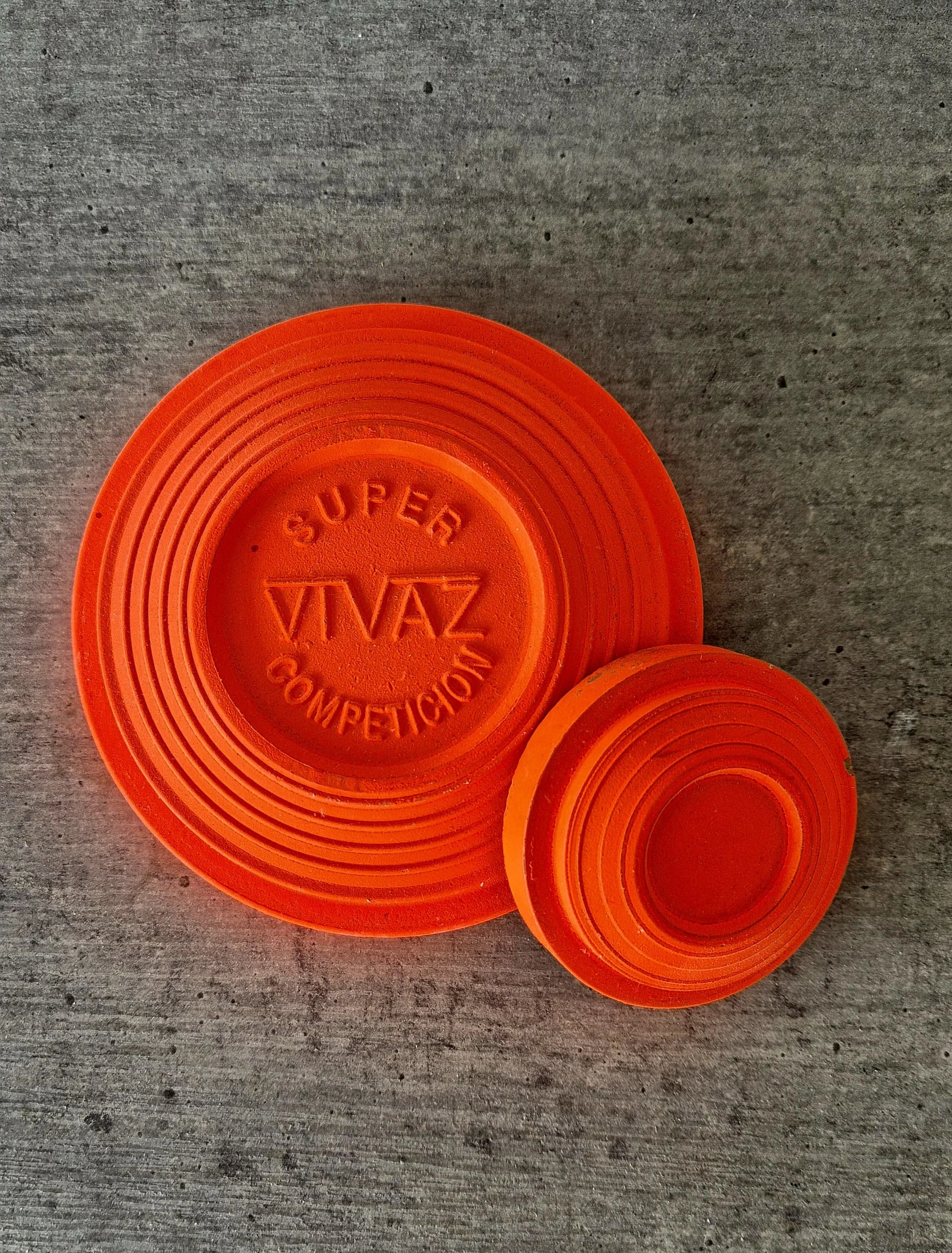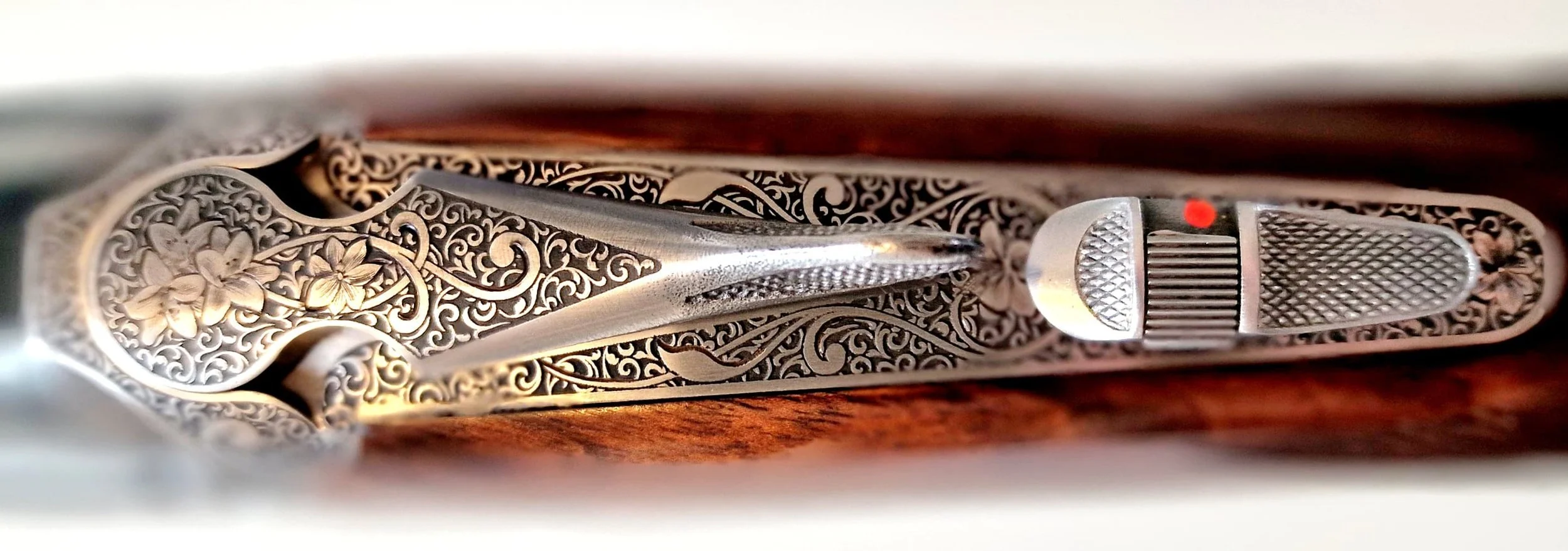Clay target shooting - «Shoot into the void to hit the target»
“Shoot into the void to hit the target.” - Dr. Axel B. Müller, German clay pigeon champion and former CEO. In the picture: Beretta 694 (top), Rizzini Venus (bottom).
What is clay target shooting?
Originally, clay pigeon shooting was executed with real pigeons that where flying out of “traps”. Today, these flat disques are used as targets.
The most popular shooting disciplines in Switzerland are 300-meter rifle shooting as well as 50-m and 25-m pistol shooting. Also shooting with small calibers and airguns is widespread. Not as prevalent but still very popular is shooting clay targets with shotguns. Clay pigeon shooting, also known as clay target shooting, is a sport in which participants use shotguns to shoot at flying targets called "clays". These targets are launched from a trap and break apart when hit, simulating the flight of birds. Clay targets are made from a mixture of limestone and petroleum pitch. This combination creates a material that is strong enough to withstand being launched from a trap at high speed, but brittle enough to break easily when hit by pellets from a shotgun. Clay pigeon shooting is a very challenging shooting discipline because the marksmen have to hit fast moving, small targets flying through the air or rolling over the floor, their trajectory influenced by wind and weather. This sport requires precision, concentration and skills.
What different disciplines are there?
For shooting clay targets, shotgun ammunition containing birdshot is typically used. This type of shot is designed to spread out and break clay targets when fired from a shotgun.
Clay target shooting includes various disciplines, the most popular being the Olympic sports Trap and Skeet, as well as Sporting and Compak Sporting. Sporting and Compak Sporting are not Olympic sports but there are still (world) championships. Each discipline has its own unique characteristics and target presentation, offering a range of challenges and experiences for shooters. The most popular are the Olympic sports Trap and Skeet. Trap Shooting is one of the three major disciplines of competitive clay pigeon shooting. Trap shooting is distinguished by the targets being launched from a single "house" or machine, generally away from the shooter, compared with Skeet Shooting where targets are launched from two "houses" crossing in front of the shooter. Sporting clays involve a more complex course, with many launch points. It is designed to simulate hunting field game. It's often called "golf with a shotgun" because it involves a course with multiple stations, each presenting unique shooting scenarios.
It originally was invented to train hunters, simulating small game (e.g. hares, foxes, birds) moving. Compak Sporting is often referred to as a "compacted" version of Sporting Clays, requiring less space than traditional Sporting Clays courses. Over and under shotguns or semi-automatic shotguns - most often 12 gauge - are used for clay pigeon shooting.
What are the particular challenges of clay target shooting?
Clay pigeon shooting involves shooting at dynamic targets whose trajectory is not always predictable, also depending on the wind and weather, since this sport is usually practiced outdoors. The clays are small and fast-moving, therefore a high level of precision is required when aiming and shooting . A good shooting technique is crucial. A stable stance, correct posture and a firm and clean grip on the weapon must be practiced and learned. Clay pigeon shooting requires analytical thinking, because when shooting at moving targets - as opposed to static targets - you have to shoot into the void in front of the clay targets in order to hit them. The time it takes for the shot to reach the target must be taken into account as well as the ballistic trajectory of the shot itself. The initial velocity, the launch angle and possibly also the air resistance of the clay pigeons must be recognized within seconds.
The size and trajectory of the shot (pellets), which can be influenced by so-called interchangeable chokes (narrowing of the muzzle), as well as the distance of the shooter to the clay pigeon must also be taken into account. Intuition as well as analytical and strategic thinking help to achieve success in clay pigeon shooting.
In addition to strength, mental concentration and good hand-eye coordination, the marksman mus “swing” the shotgun, i.e. he follows the trajectory of the clay pigeon with the shotgun, overtakes it and pulls the trigger without stopping. Stopping the gun can result in missing the target. The barrel must move smoothly.
Another challenge of clay pigeon shooting is the sighting of the over and under shotguns used for clay target shooting: They only have a bead sight and no rear sight. The rear sight is “replaced” by mounting the shotgun porperly into the shooter's shoulder and cheek. The marksman looks down the barrel of the shotgun to aim. The stock of the shotung must be adapted to the shooter's physique. Ambitious clay pigeon shooters often use a custom-made stock that has been individually adapted to their physique.
A suitable stock is essential, as it replaces the rear sight on over-and-under shotguns. In addition to standard stocks, there are adjustable stocks (the picture shows the adjustable stock of the Rizzini Venus) or custom stocks, where the shooter is measured and the stock is made to fit the shooter exactly.
What are the techniques to shoot clay pigeons?
Shotguns only have a bead sight and no rear sight. The “chokes” on the shotgun barrel influence the spread of the shot sheaf.
There are various techniques shooting clay targets. The most common method is “Swing Through”: the shooter swings the gun's muzzle, starting behind the target, through the target's path, and then firing at a point ahead of the target, shooting basically in to the void. The clay target and the shot will meet split seconds later. The challenge with “swing through” is swinging the barrel in one fluid, clean movement and not jerking when pulling the trigger. This method is particularly suitable for fast targets. The “Maintained Lead” shooting method involves keeping the shotgun barrels ahead of the target's path throughout the swing and firing, ensuring a continuous lead. The difficulty with this method lies in picking up the speed of the pigeon and maintaining it until the shot. It's a technique that works well for predictable target trajectories, providing a steady and consistent lead, used by advanced shooters. With the “pull-away” method, the shooter picks up the pigeon with the barrel, follows it and pulls away from it shortly before the shot. This method is suitable for different trajectories and speeds, but it takes some practice to correctly estimate the distance to the pigeon and the timing. The choice of method depends on personal preference as well as the trajectory, speed and distance of the target.
What gear is needed to shoot clay targets?
Protective goggles, cap, hearing protection and shooting vest are standard equipment for every clay pigeon shooter.
The most important tool for clay target shooting is a suitable shotgun. In clay pigeon shooting, over and under shotguns are predominantly used due to their precise shooting performance and the possibility of equipping them with various “chokes”. "Chokes” are constrictions in the shotgun barrel that influence the spread of the shot. They are used to optimize the shot load for either long or short distances. However, side-by-sides are also used for clay pigeon shooting. Over-and-under shotguns are often lighter and more compact than side-by-side shotguns, which can make them advantageous for shooters who value agility. Semi-automatic shotguns can also be used for target shooting. The most popular shotgun manufacturers include Beretta, Perazzi, Rizzini, Zoli, Benelli, Krieghoff, Fabarm and Blaser.
12 gauge shotguns are the most common, although 20 and 28 gauge are also used. Shooting is done with special shotgun shells for clay pigeon shooting. It is important that the ammunition complies with the guidelines of the respective shooting range.
Wearing good safety goggles and a cap to protect the eyes and head from splinters from the shattering clay pigeons is very important. As always when shooting, ear protection must be worn. Many clay pigeon shooters wear special earplugs instead of the usual ear muffs, as the stock of the shotgun can hit the ear muffs. A shooting vest with pockets is practical for stowing ammunition and other utensils.
Clay pigeon shooting is not only an exciting sport, but also a great way to hone your shooting skills!
“The barrel shoots, the stock hits”
Read my review of the Rizzini Venus, a shotgun made for the female phsyique and learn why it is important to have a stock that fits your individual features.









